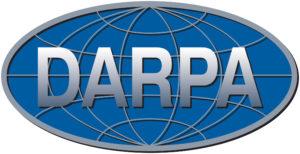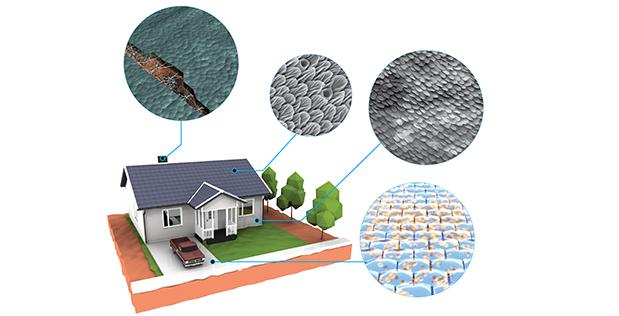3D Printing the House That Fixes Itself: DARPA’s Exploration of “Living Materials” for Construction Offers Incredible Potential
 Nature has long provided a set of constraints upon construction. Along with those restrictions, however, also comes a rich source of inspiration that humans continually re-discover we are better off not ignoring. Design that takes its cues from natural processes for creation is called biophilic design, and it differs from ‘green’ design in that its efforts are not simply to do as little harm as possible to the environment, but rather to imitate the very processes by which the natural world survives.
Nature has long provided a set of constraints upon construction. Along with those restrictions, however, also comes a rich source of inspiration that humans continually re-discover we are better off not ignoring. Design that takes its cues from natural processes for creation is called biophilic design, and it differs from ‘green’ design in that its efforts are not simply to do as little harm as possible to the environment, but rather to imitate the very processes by which the natural world survives.
Think of it this way: A seed is planted and from that is created an entire tree. That tree doesn’t simply sit on top of its location but is rooted to it, contributes to it, and survives because of it. When a branch breaks off, you don’t see teams of little construction squirrels there repairing the tree; instead, it repairs itself. This leads to the question: could we create a ‘seed’ that grows into a house? Most likely not, but it also provides a more practical fount of inspiration leading materials scientists to imagine self-healing materials.
One of the ways to create building materials that positively interact with their environment is by using organic materials such as plant cells as their basic components. Unfortunately, the processes most often used to convert raw material into construction supplies do irreparable harm to the cells, rendering their natural properties unavailable. However, it is increasingly being recognized that 3D printing provides a method of working with cells to create structures without harming the cells themselves.
It is in this vein that the US Department of Defense Advanced Research Projects Agency (DARPA) has launched the Engineered Living Materials (ELM) program. Their goal is to investigate the possibilities for an entirely different type of building material, one that grows and responds to the environment in which it is engaged, as we first learned about last month. The Program Overview describes the project proposal:
“The Engineered Living Materials (ELM) program will develop design tools and methods that enable the engineering of structural features into cellular systems that function as living materials, thereby opening up a new design space for construction technology. These methods will be validated through the production of living materials that display hallmarks of biological systems, such as the ability to actively sense and respond to the environment, or to heal after damage. Successful completion of ELM program objectives will require innovations in the ability to functionally unite living components with inert structural materials, to program structural features into living systems, and to extend the scale of synthetic biology building blocks from the molecular to the cellular. The deliverables from this program will comprise a suite of technologies that enable the production of living structural materials tailored to design specifications, such as those provided by architects and builders.”
These construction units could potentially heal themselves, slough off dirt and debris, or even allow a roof to breathe and control a building’s air flow. Imagine if a house’s materials could put down roots, the way that trees do, to help them weather the winds of a tropical storm. Or if the bacteria in a parking lot would eat up the oil spilled from that little leak in your car. Maybe even a window that could grow back together after little Timmy hit a baseball through it. And DARPA is looking to make this happen soon:
“DARPA is seeking technologies that enable the engineering of hybrid materials composed of structural scaffolds that support the rapid growth and long-term viability of living cells that endow the final products with biological functions. These materials should exhibit aspects of both the inert grown materials that are being produced today at the factory scale, such as structural integrity, as well as those of living systems, such as self-repair. The platform technologies developed in the ELM program are intended to be scalable and generalizable, so as to be transitioned from the lab to industry in the near-term.”
Even the Department of Defense has budget constraints that slow down progress, but in addition to all of the other things brought about by the DoD, they have continually been a source for innovation that makes its way into civilian life (think GPS and the internet, as GBE reminds us). You shouldn’t expect to be able to utilize any of these kinds of materials just yet, but given how quickly these kinds of technological advances move, it’s possible that your children could grow up to be brick farmers. Discuss further in the 3D Printed Living Materials forum over at 3DPB.com.
Subscribe to Our Email Newsletter
Stay up-to-date on all the latest news from the 3D printing industry and receive information and offers from third party vendors.
You May Also Like
Precision at the Microscale: UK Researchers Advance Medical Devices with BMF’s 3D Printing Tech
University of Nottingham researchers are using Boston Micro Fabrication‘s (BMF) 3D printing technology to develop medical devices that improve compatibility with human tissue. Funded by a UK grant, this project...
3D Printing Webinar and Event Roundup: April 21, 2024
It’s another busy week of webinars and events, starting with Hannover Messe in Germany and continuing with Metalcasting Congress, Chinaplas, TechBlick’s Innovation Festival, and more. Stratasys continues its advanced training...
3D Printing Webinar and Event Roundup: March 17, 2024
It’s another busy week of webinars and events, including SALMED 2024 and AM Forum in Berlin. Stratasys continues its in-person training and is offering two webinars, ASTM is holding a...
3D Printed Micro Antenna is 15% Smaller and 6X Lighter
Horizon Microtechnologies has achieved success in creating a high-frequency D-Band horn antenna through micro 3D printing. However, this achievement did not rely solely on 3D printing; it involved a combination...






























